Plant Lovers' Almanac: Dog days of summer are a challenging time for gardeners
We are in the middle of the "dog days" of summer, usually thought of as July 3 to Aug. 11 — and the most oppressive heat of the year. The term refers to the days of the year when the Dog Star, Sirius, rises and sets around the same time as the sun, according to the Farmers' Almanac. Because the Dog Star is the brightest star visible on Earth, ancient Romans believed it gave off enough heat to combine with the sun’s heat during those sweltering summer days.
With this heat and limited rain it is a challenging time for gardeners; lawns are periodically going a bit brown, and many plants such as hostas lose their luster. Hostas are great for spring and early summer foliage, but become besmeared by unsightly bloom scapes and senescent flowers by now, though some hostas in our yard, such as "Sum and Substance," still sport "sightly" blooms.
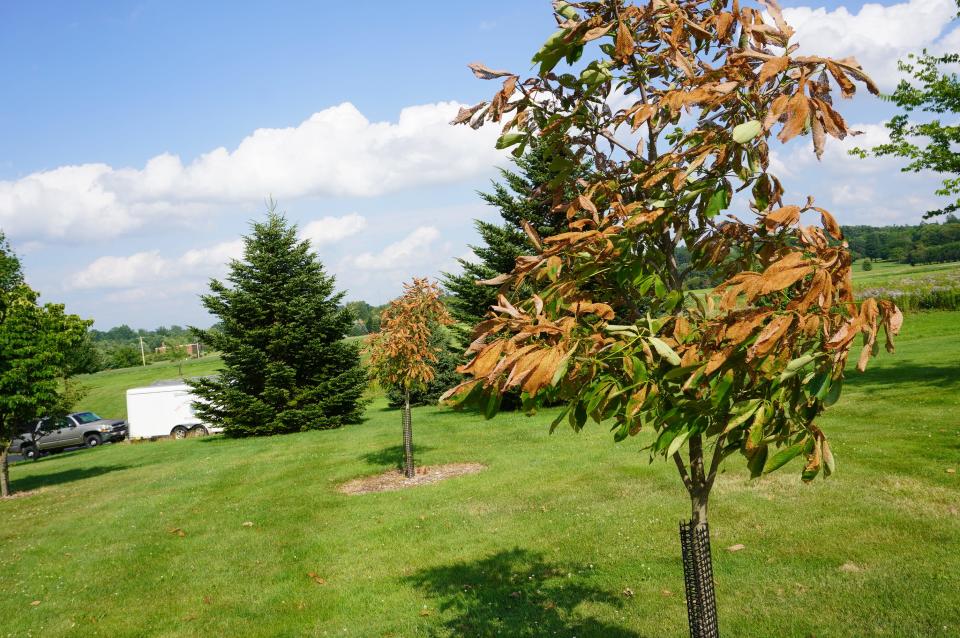
Adult Japanese beetles have not yet left the scene and continue to frustrate plant lovers, thriving even on our beauteous buckeyes. There is much to enjoy though, from maturing florets on hydrangeas such as "Strawberry Shake" transitioning from white to frothy pink, to the flitting of pollinating bumblebees and dancing dragonflies distracting us from pesky mosquitoes.
It is the time of year for Russian sage, a member of the mint family, since 2017 reclassified from the genus Pervoskia into the genus Salvia, and with many new varieties, some more compact than the bold splays of the species: Take a look at the wonderfully trademark-named "Peek-A-Blue."
Plant Lovers' Almanac: Potato, po-tah-to, tomato, to-mah-to, let's learn more
Revel in the continuing season of daylilies, the glorious foliage of pawpaw and of fern-leaf beech, the showiness of the glossy green leaves of tupelo/black gum that periodically shed a few bright scarlet leaves as harbingers of autumn. So, take your dogs out for a well-hydrated run, in honor of the Dog Star. But, speaking of daylilies …
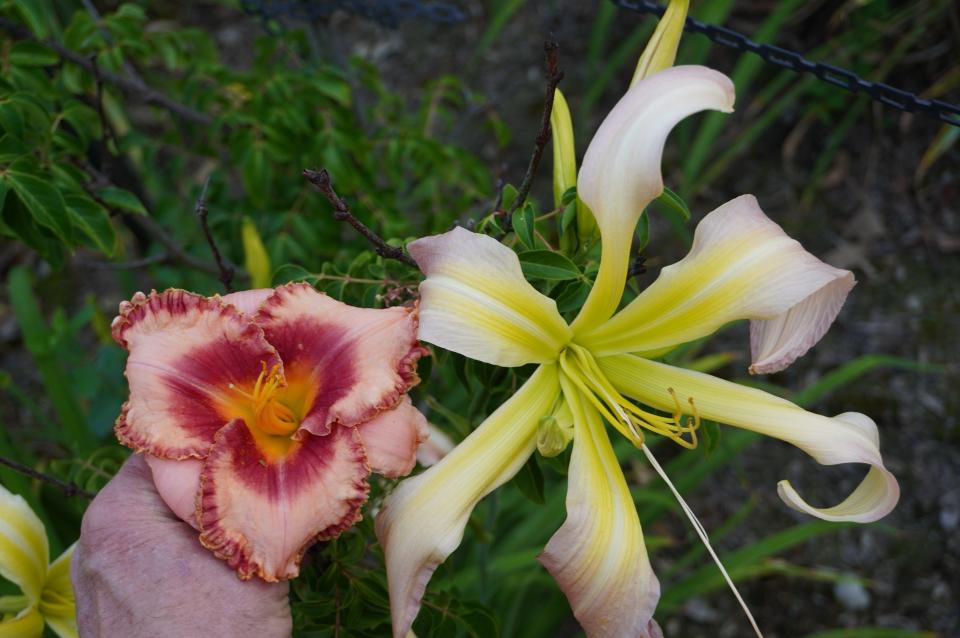
A giant daylily?
While walking at Secrest Arboretum in Wooster last week I phoned curator Jason Veil and said, “Jason, what is this spindly, almost spider-like daylily with blooms that are way bigger than a usual daylily blossom?”
He said that as a daylily, it is not one of the over 100 true lily species in the genus Lilium, nor one of the popular Asiatic lily hybrids (Lilium asiatica) beautifying Secrest. It is also not one of the over 200 not-lily plants with “lily” in their common name, from lily of the valley to lilyturf various fritillaria, alstromeria or gladiolus types, nor is it the Japanese spiderlily (Nerine).
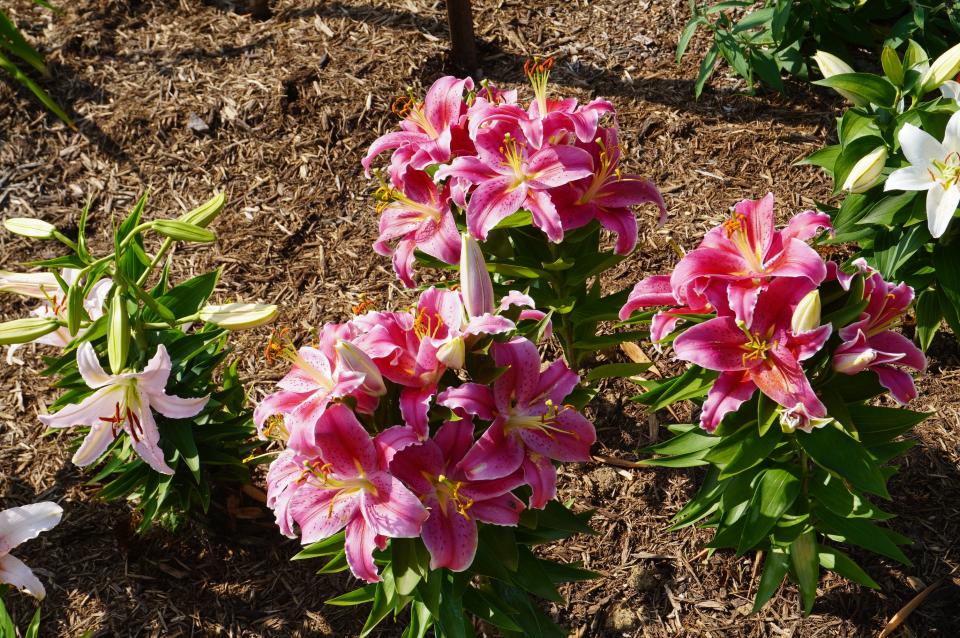
Veil added: “It is, in fact, yet another plant with lily in its name that is not a true lily; it is a true daylily (genus Hemerocallis = flower for a day. It is a spider daylily!” These are defined as daylilies at least four times as long as they are wide. Kinda cool. I won’t say I prefer them to standard daylilies, but they are an interesting contrast.
And some of the cultivar names — from "Dr. Doom" to "Heavenly Pink Twister," and "Awesome Butterfly," "Blizzard Blast," "Dr. Octopus," "Electric Lizard" and possibly the one I noticed (we are not sure), "Giant Teraton." Give them a try.
Joe-Pye weed
One of my favorites harbingers of late summer is the salmon-pink blossoms of Joe-Pye weed (Eutrochium spp.). I think of the flowering of this tall, herbaceous perennial in meadows and gardens as a companion to ironweed and goldenrod as a late season flower bridging us into autumnal hues. Yet it is starting to bud and even bloom now in a field adjacent to Secrest Arboretum.
The typical wild species we see are 4-6 feet tall, and some years ago horticulturists realized that this native plant could be a great background plant for perennial gardens with layers of shorter plants. So, it is now a popular garden plant, and there are some shorter cultivars, such as "Little Joe" and "Baby Joe" that trend more to the lower end of the spectrum for Joe-Pyes.
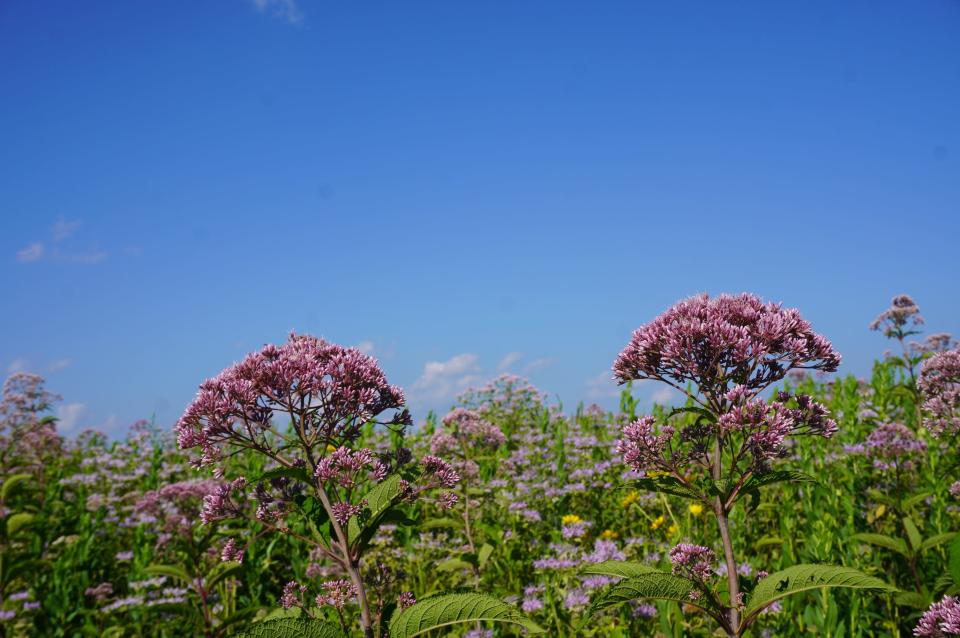
The sunnier the garden, the taller the plants, and if they are too tall for your design, consider pruning back halfway in late spring or early summer: The result will be shorter plants with a bushier form.
I have always wondered who “Joe Pye” was, and there is considerable evidence he was an 18th century Mohican Native American from Massachusetts named Schauquethqueat before a name change. Incidentally the plant also underwent a Latin genus name change in 2000, from Eupatorium to Eutrochium, with salmon pink-flowered species with mostly whorled leaves being reclassified to its present genus name.
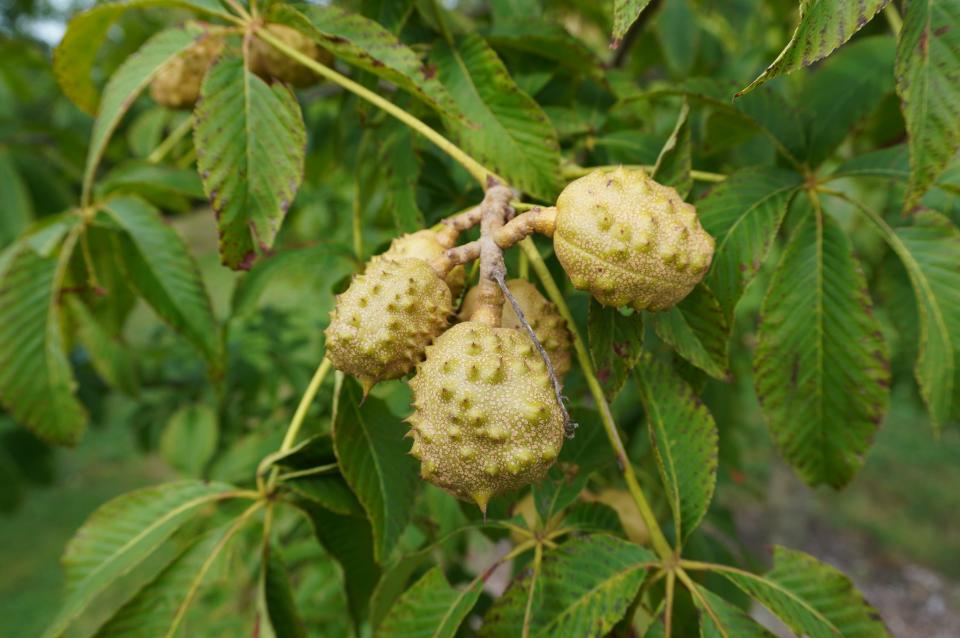
Buckeyes
There are many wonderful types of buckeyes for woodlands and landscapes, starting with floodplain Ohio buckeyes (Aesculus glabra) growing naturally in woodlands, especially in southern Ohio; the spectacular scarlet flowers and clean foliage (good resistance to leaf blotch disease) of red buckeye (A. pavia); the towering yellow buckeye (A. flava); and the graceful shrub, bottlebrush buckeye (A. parviflora).
Virtually all buckeyes have long ended their flowering season, but the midsummer frilly flower panicles of later-blooming bottlebrush buckeye cultivar A. parviflora serotina "Rogers" still graces the scene. See it while it lasts.
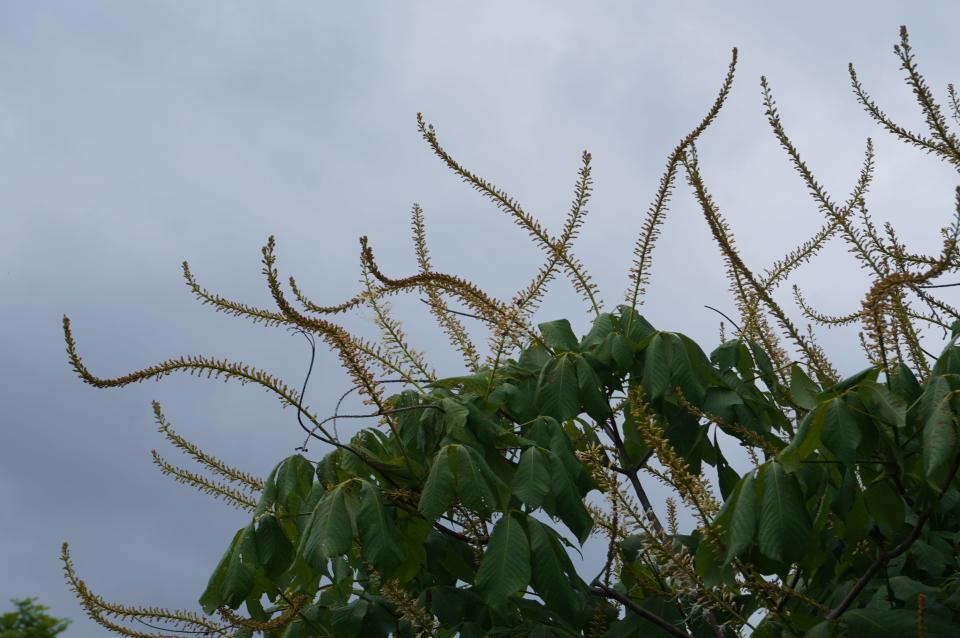
The name game
You have noticed that I write a lot about names and classifications, and changes in same, for everything from insects (gypsy moth changed to spongy moth), and those lilies and daylilies above, to renaming birds (coming soon).
This happens for a lot of reasons: from eliminating pejoratives in names to identifying differences in plants and thus referencing their proper care. Most importantly, names and knowledge of relationships to each other evolves due to new scientific discoveries once we learn more about the DNA of organisms. Not to mention the need for easier communication, the classic case being the European waterlily that has almost 250 common names in just four languages but only one Latin name, Nymphaea alba.
Names matter — as noted thousands of years ago by a Chinese philosopher: "The beginning of wisdom is calling something by their proper name."
Finally, here is some anonymous dog days of summer poesy. You decide which this year’s weather predicts.
Plant Lovers’ Almanac: An ode to black raspberries, columbines, aspens and apples
Jim Chatfield is a horticulture educator and professor emeritus at Ohio State University Extension. If you have questions about caring for your garden and other topics, write to chatfield.1@osu.edu or call 330-466-0270. Please include your phone number if you write.
This article originally appeared on Akron Beacon Journal: Plant Lovers' Almanac: Dog days of summer are a challenging time for gardeners

